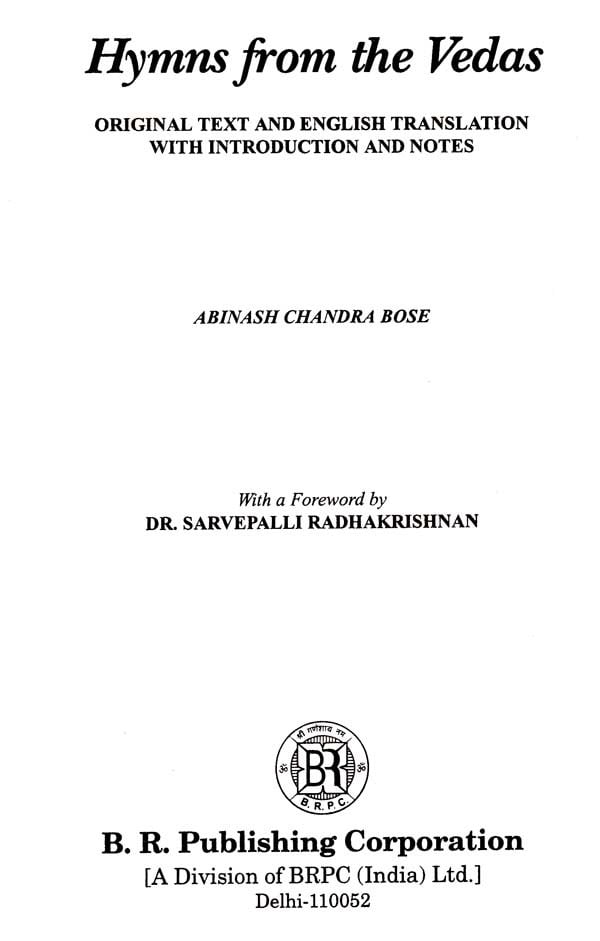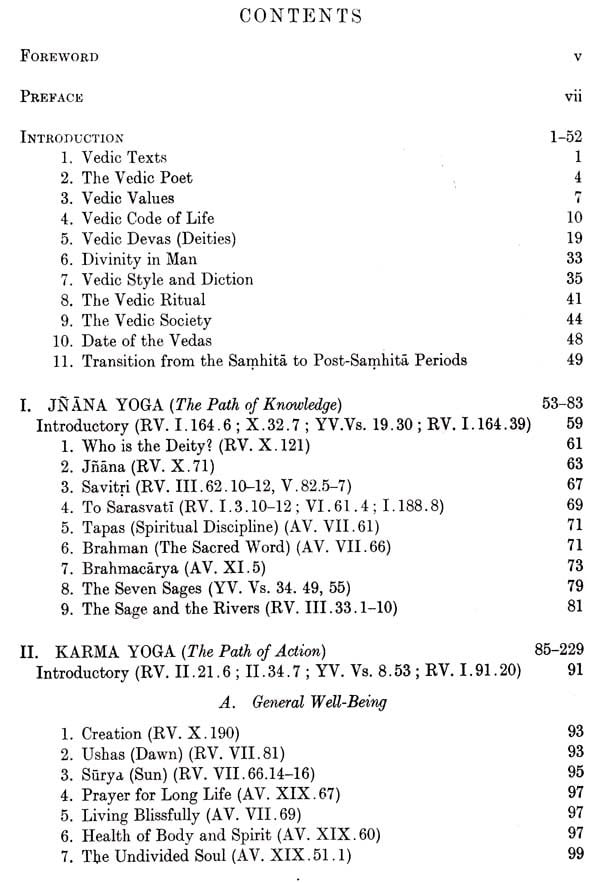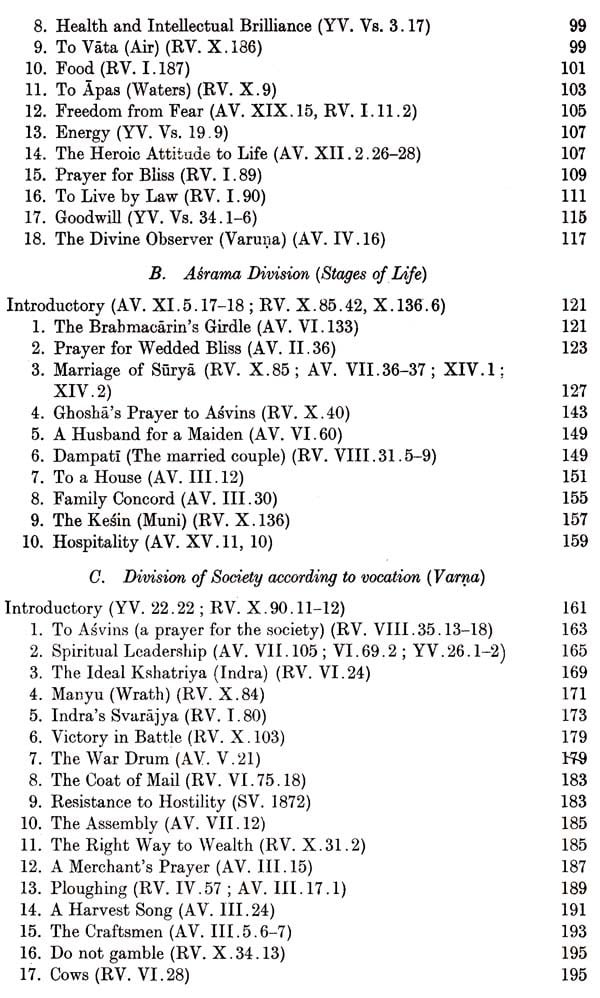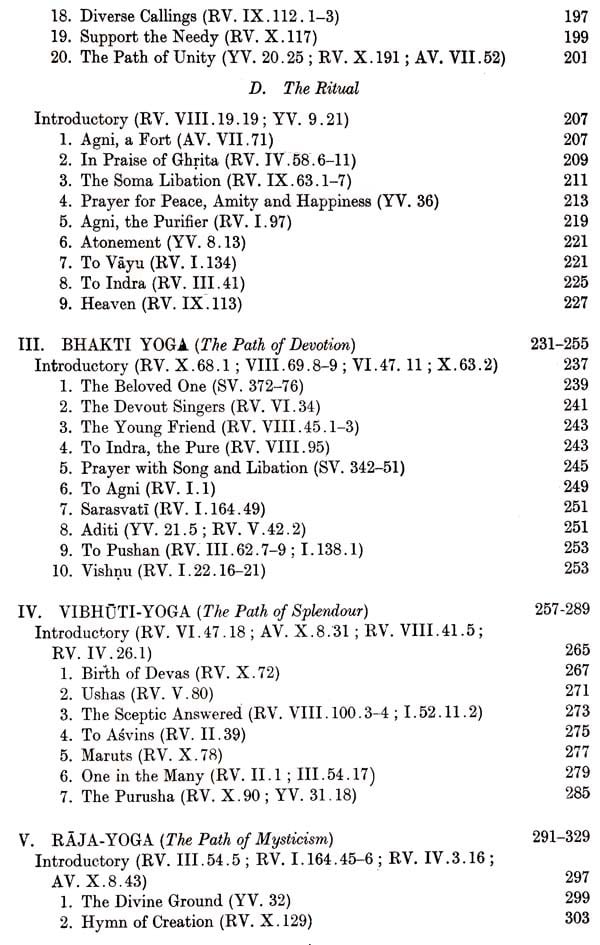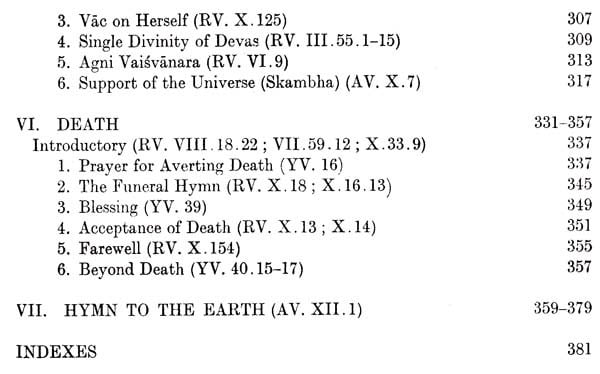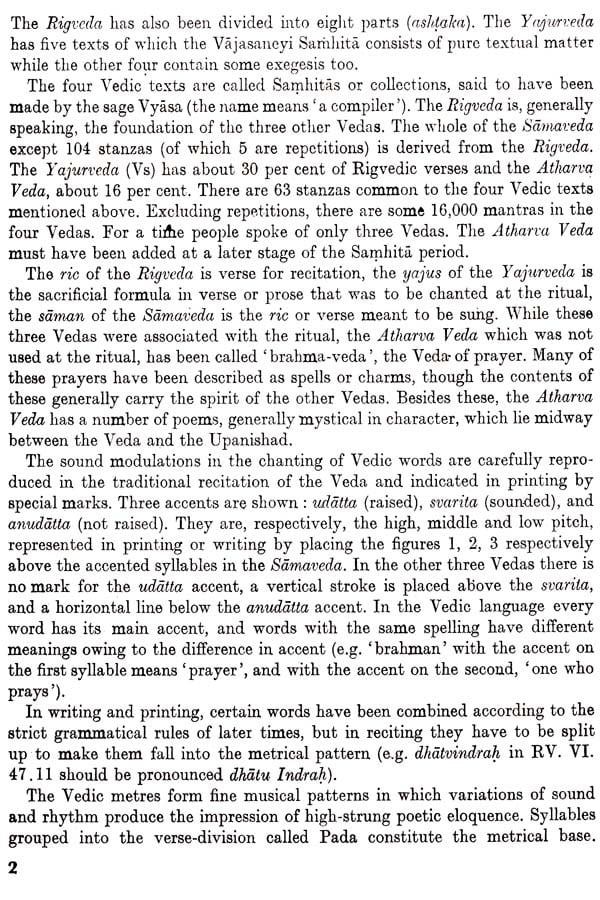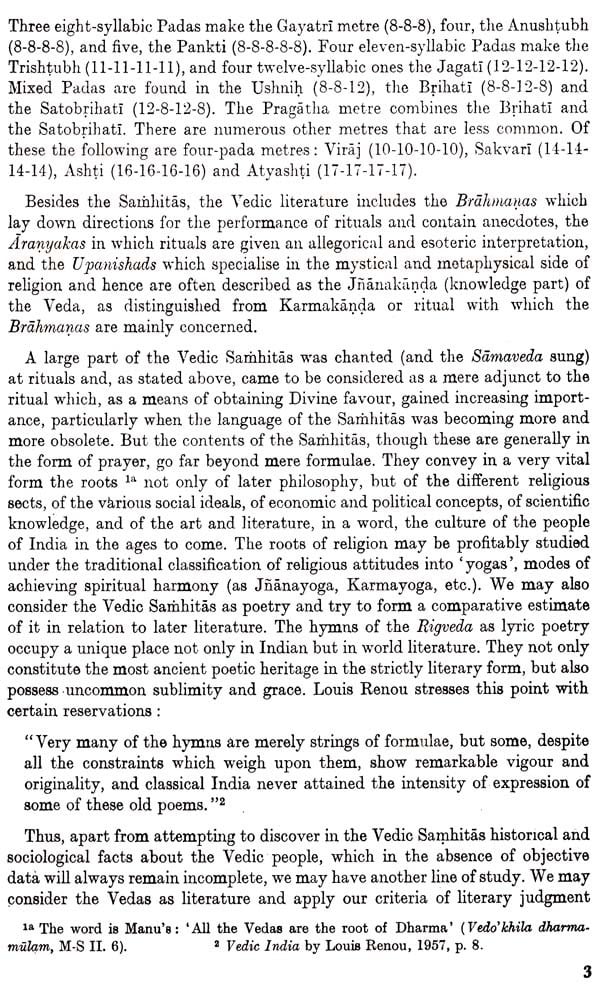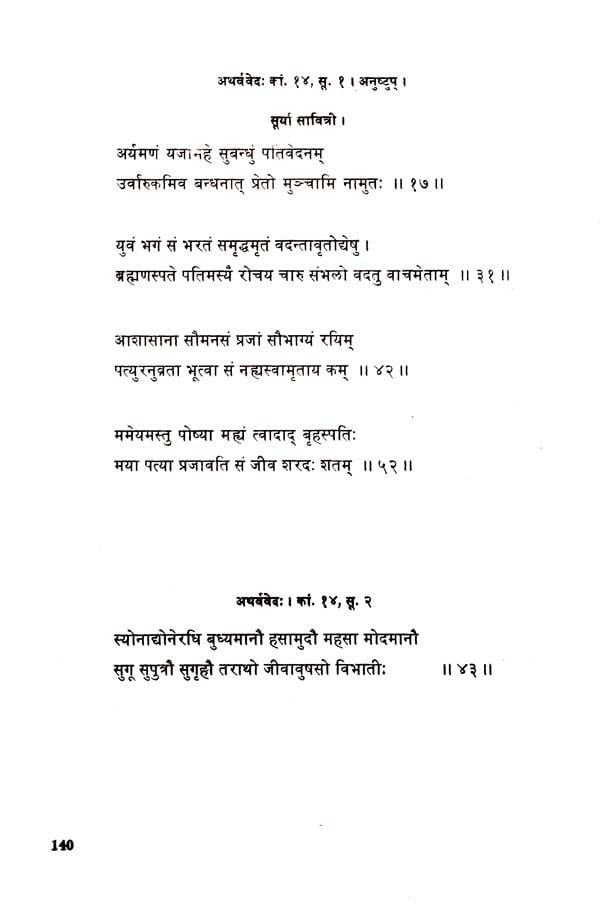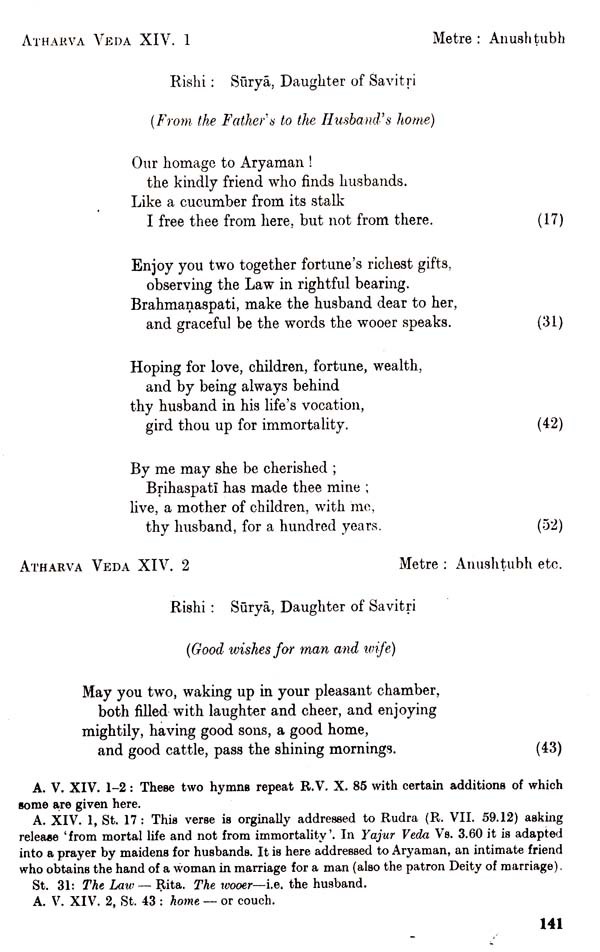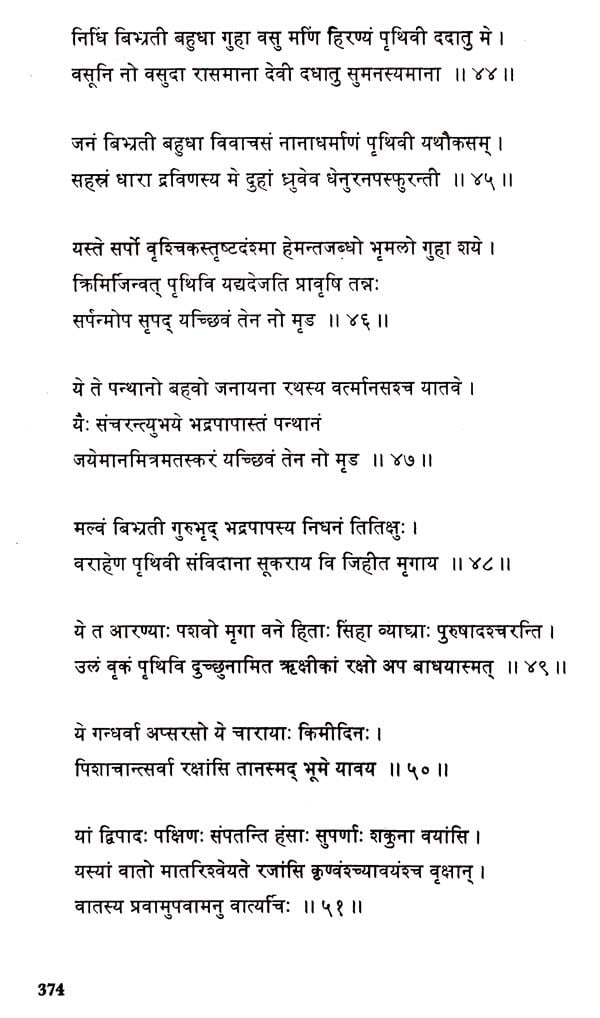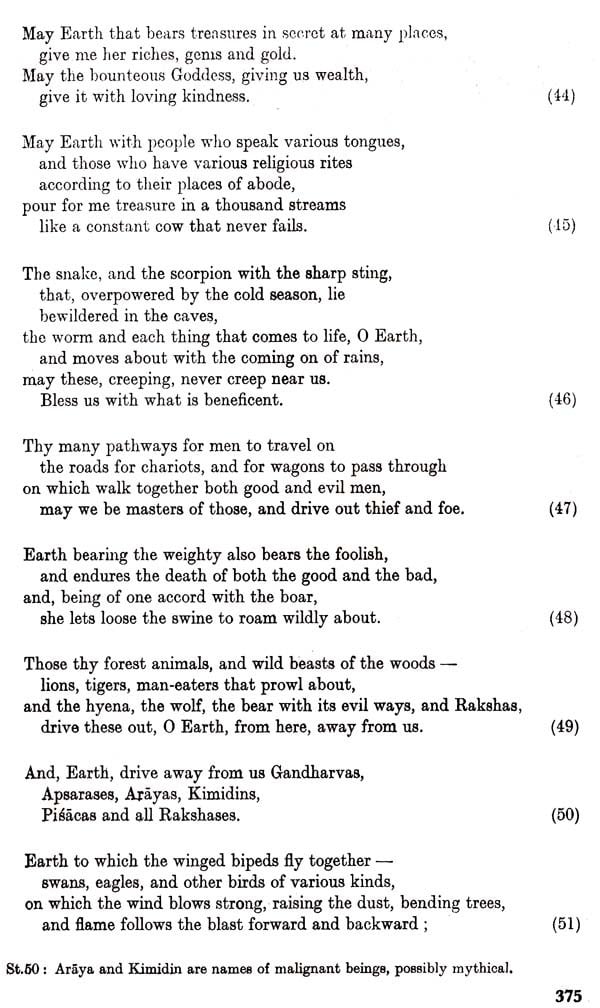
Hymns from the Vedas- Original Text and English Translation with Introduction and Notes (An Old and Rare Book)
Book Specification
| Item Code: | AZE511 |
| Author: | Abinash Chandra Bose |
| Publisher: | B.R. Publishing Corporation |
| Language: | SANSKRIT TEXT WITH ENGLISH TRANSLATION |
| Edition: | 1966 |
| ISBN: | 9788176465717 |
| Pages: | 400 |
| Cover: | PAPERBACK |
| Other Details | 10.00x6.50 |
| Weight | 550 gm |
Book Description
The Foreword was written by Dr. S. Radhakrishnan, the then Vice-President of India, who subsequently became the President of India.
In this book an attempt has been made to bring together representative hymns from all the four Veles. In order to place them in the proper perspective from the religious point of view, I have classified them in the manner of the Bhagawad Gita into five vogue or ways of approach in religion. There see Junyoga, the Path of Knowledge, Karmayogs, the Path of Action, Bhakti gogs, the Path of Devotion, Vihatiyogs, the Path of splendor (approaching the Divine through the glory of the universe), and Rajayogs, the Mystical Path. I have added two more sections, one on Death, giving the Vedic attitude sowards it (which greatly differs from later attitudes) and the other on the Farth, comprising the long hymn of sixty-three stanzas in the Atharos Vela, which illustrates the Vedic poet's zest for life with deep attachment to spiritual My translation is based on the work of orientaliste, western and eastern, but in the interpretation of the religious significance of the text I have also drawn upon the Indian spiritual tradition. It is not always realised how the later Velar throw light on the earlier, and Upanishads and other Vedic as well as post-Vedic literature offer guidance in finding the meaning of the Veds.
In my translation I have kept close to the Vedic original, rendering line for line as far as I could. I have also tried to suggest the Vedic metrical pattern in the translation, though in quite a loose manner. My attempt has not, however, been to make the translation read like original English poetry (which is possible only for an English poet), but to give a version of the Veda which would convey an impression of the religious and poetic feelings of the worshippers. My difficulty has been increased by my desire to ensure that my work does not overstep the limits of translation.
Like many eastern and western orient lists I have discovered beautiful and passionate poetry-even though the passion is religious-in the Vedas, chiefly in the Hoods, but generally in the other Vedas too. As the passion has been expressed with unusual power and grace, the original text, given in the Sanskrit script side by side with the English translation, is expected to have a special attraction for readers acquainted with that language.
Much valuable work has been done during the last century in analyzing the documents and describing and interpreting their contents with the help of the exhaustive commentary of the great fourteenth century Indian scholar, Savanna. The contribution of orient lists to Vedic scholarship falls into two parts: one, an intensive technical study of the texts, and the other, speculations about their historical and anthropological significance. The textual study has produced excellent results, but the speculations which have engaged much attention among Western scholars, often appear unrealistic owing to the lack of contact with any known body of facts.
Two difficulties have stood in the way of an objective approach to the Vedic texts: one, the Indian theory that, as these were used at rituals, they have only a formal value; and the other, the Western view, that these documents being very old have chiefly an anthropological interest. One has to guard against these preconceptions in forming a right estimate of the documents as literature and as source-books of Indian religion and culture. The four Vedas are:
1. The Rigveda, divided into ten books (mandala) having 1028 hymns (including 11 supplementary ones) and consisting of 10,552 (including 80 supplementary) stanzas. into 2. The Ayurveda (Vajasaneyi Samgita, Madhyandina text) divided 40 chapters, having 1,975 stanzas and prose-units.
**Contents and Sample Pages**
